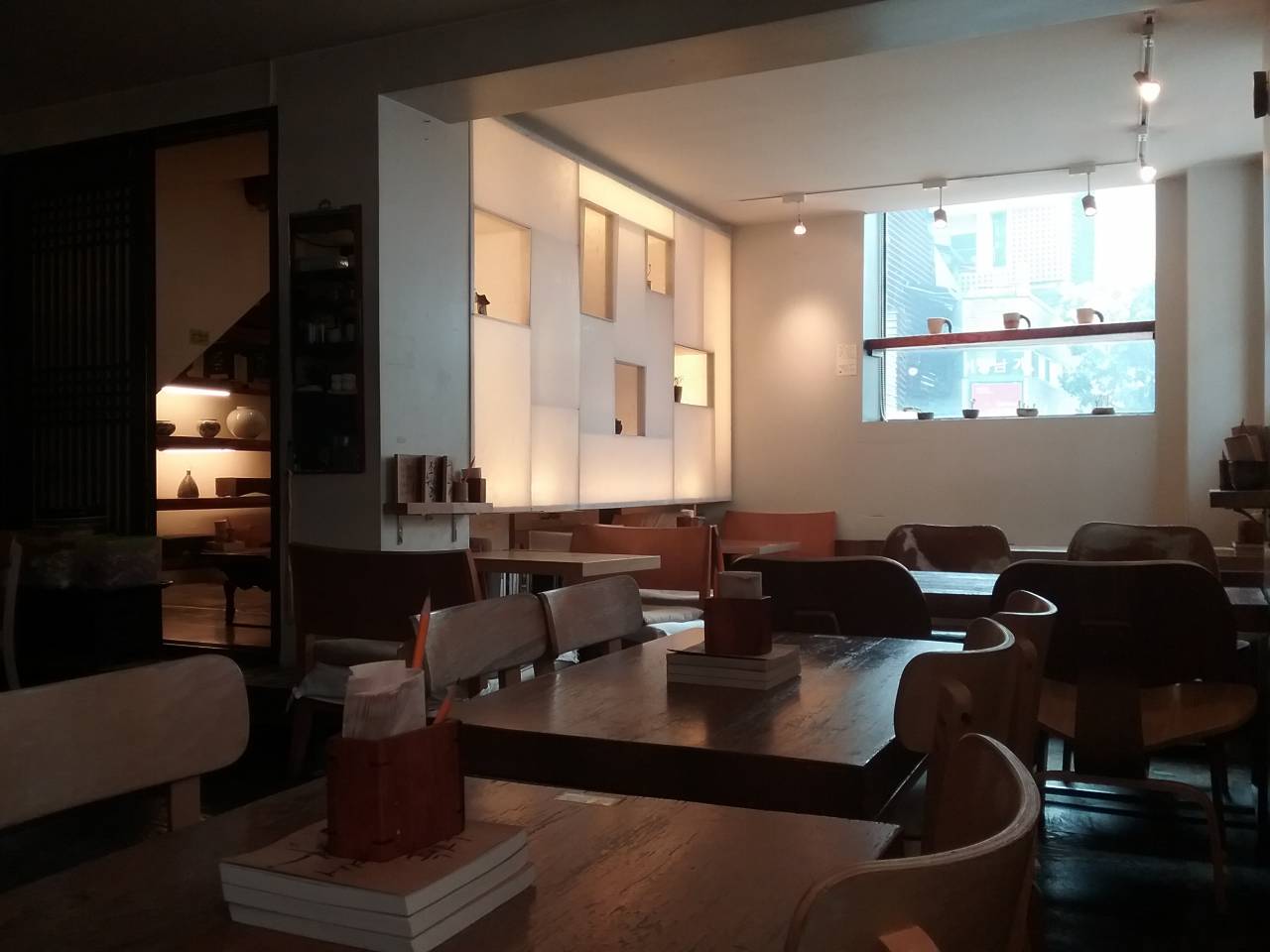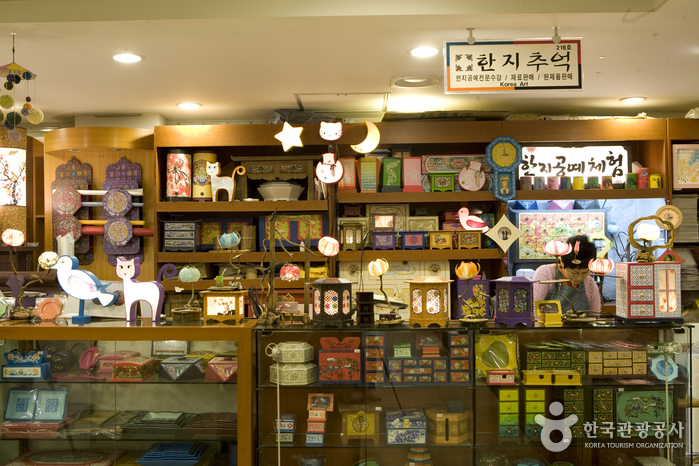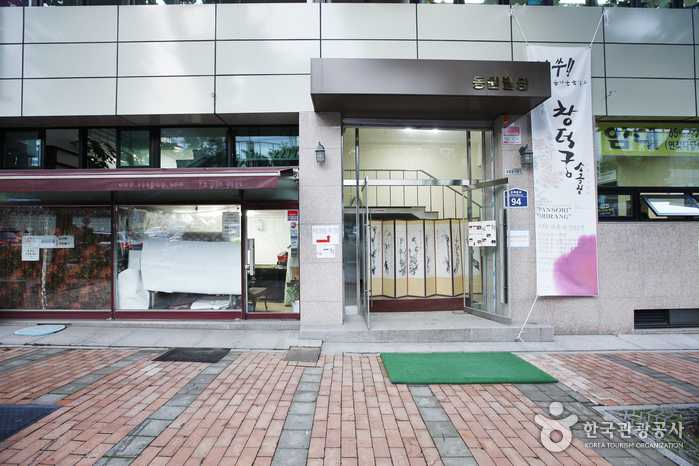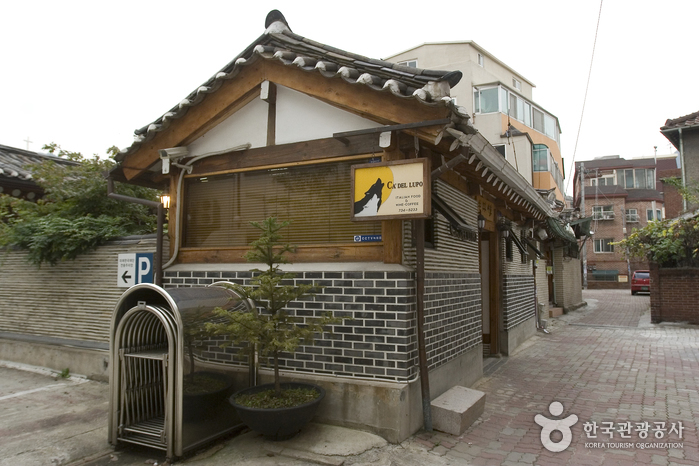Gallery Park Young Sook - Atelier Seoul (박영숙요 (아틀리에서울))
905.0M 17614 2020-04-23
30, Insadong-gil, Jongno-gu, Seoul
+82-2-730-7837
Gallery Park Young Sook (Atelier Seoul) is the gallery of the modern potter, Park Young Sook. The gallery displays and sells white porcelain representing the Joseon dynasty, Buncheong ware, and ceramics with modern flavors. As the name implies, the gallery feels more like a showroom than a shop, even though the various items, including flower vases, decorative ceramics, and daily use earthenware are for sale. Queen Elizabeth II of England visited Gallery Park Young Sook during her second visit. The gallery has even expanded, with another branch opening in New Jersey.
Banjjak Banjjak Binnaneun (반짝반짝빛나는)
907.8M 150 2021-03-19
28-1, Insadong-gil, Jongno-gu, Seoul
+82-2-738-4525
A Traditional Beverages specialty restaurant located in Insa-dong, Seoul. A store selling hand-crafted Korean traditional tea. The most famous menu is green plum tea.
Hanji Chueok (Recollections) (한지추억)
910.0M 15002 2022-09-16
6, Insadong 7-gil, Jongno-gu, Seoul
+82-2-735-2059
Hanji Chueok (Recollections) is one of the better-known craft shops in Insa-dong and has even been featured by a number of international magazines. Prepared using traditional Korean processing methods, hanji is a type of beautiful, high-quality paper. Hanji Chueok is a great place to experience the tradition of hanji crafts; accessories, photo frames, and interior design items line the store shelves. Visitors can not only purchase extremely well-crafted items, but can also participate in seminars taught by professional artists to learn how to make their own hanji items. Visitors can take home their hanji creations as a lovely souvenir at the conclusion of the seminar.
Changdeokgung Palace Complex [UNESCO World Heritage Site] (창덕궁과 후원 [유네스코 세계문화유산])
915.0M 865457 2024-06-04
99 Yulgok-ro, Jongno-gu, Seoul
Changdeokgung Palace was the second royal villa built following the construction of Gyeongbokgung Palace in 1405. It was the principal palace for many kings of the Joseon dynasty, and is the most well-preserved of the five remaining royal Joseon palaces. The palace grounds are comprised of a public palace area, a royal family residence building, and the rear garden. Known as a place of rest for the kings, the rear garden boasts a gigantic tree that is over 300 years old, a small pond and a pavilion.
The palace gained importance starting from the time of Seongjong, the 9th king of Joseon, when a number of kings began using it as a place of residence. Unfortunately, the palace was burned down by angry citizens in 1592 when the royal family fled their abode during the Imjin War. Thanks to Gwanghaegun, the palace was restored in 1611. Even today, it houses a number of cultural treasures, such as Injeongjeon Hall, Daejojeon Hall, Seonjeongjeon Hall, and Nakseonjae Hall.
Changdeokgung Palace’s garden behind the inner hall, called the "Secret Garden," was constructed during the reign of King Taejong and served as a rest area for the royal family members. The garden had formerly been called Bugwon and Geumwon, but was renamed Biwon Garden, or Secret Garden, after King Gojong came into power. The garden was kept as natural as possible and was touched by human hands only when absolutely necessary. Buyongjeong Pavilion, Buyongji Pond, Juhamnu Pavilion, Eosumun Gate, Yeonghwadang Hall, Bullomun Gate, Aeryeonjeong Pavilion, and Yeongyeongdang Hall are some of the many attractions that occupy the garden. The most beautiful time to see the garden is during the fall when the autumn foliage is at its peak and the leaves have just started to fall.
Though it has been treasured by Koreans for centuries, Changdeokgung Palace and its complex was recognized as a World Cultural Heritage site by the UNESCO World Cultural Heritage Committee in December of 1997 during the committee meeting in Naples, Italy.
Seoul Gongyesa [Tax Refund Shop] (서울공예사)
918.3M 0 2024-04-16
1F, 27-1, Insadong-gil, Jongno-gu, Seoul
-
Sieunjae [Korea Quality] / 시은재 [한국관광 품질인증]
921.0M 4798 2020-12-10
439, Samil-daero, Jongno-gu, Seoul
+82-10-5355-3029
Located in Gyeongun-dong, Jongno-gu at the very heart of Seoul, Sieunjae is a hanok with a longstanding tradition. It has three guestrooms including the anbang (main room), byeolchae (detached building), and jakeunbang (small room). The anbang is the only room with a living room, where various items of old furniture, including a comfortable sofa, create an antique atmosphere. The communal bathroom and toilets are supplied with toiletries, while the communal kitchen is equipped with cooking equipment and a washing machine.
The house can be rented either as individual accommodations or in its entirety. As it is situated in Jongno-gu, at the very heart of Seoul, guests can easily reach many nearby major tourist attractions. Car users are advised to use the public parking lot as the house has no parking spaces. Entering by a small gate, the little flowerbed comes into sight. This old hanok shows traces of repair works on the tiled roof.
Harmony Mart - Insa Branch [Tax Refund Shop] (하모니마트 인사)
923.9M 0 2024-04-17
1F (Gwanhun-dong), 38, Insadong 5-gil, Jongno-gu, Seoul
-
Doore (두레)
925.9M 21296 2024-03-18
30 Samcheong-ro, Jongno-gu, Seoul
+82-2-732-2919
Doore is a traditional Korean restaurant known for using seasonal ingredients and house-fermented soybean paste. They offer set menus such as maehwa course (pork bulgogi), gukhwa course (beef bulgogi), and moran course (braised galbi and grilled fish). Meals are enjoyed in the following sequence: porridge, salad, pan-fried battered zucchini, hansang (rice, soup, seasonal salad, side dishes), main course, and tea. They also serve à la carte dishes like yukhoe bibimbap (beef tartare bibimbap), Eonyangsik bulgogi (Eonyang bulgogi), and galbitang (galbi soup).
Theatre Changdeokgung (창덕궁 소극장)
925.1M 9647 2021-12-07
88-1, Donhwamun-ro, Jongno-gu, Seoul
+82-2-742-7278
Theatre Changdeokgung is located across from Changdeokgung Palace in the Gugak-ro Special Cultural Zone of Seoul. To recreate the traditional Korean entertainment setting and offer a better view of the stage, the theater is designed with floor seatings facing a platform stage. The theater offers a wide array of performances including samulnori (traditional Korean percussion quartet), traditional Korean music, and madanggeuk (a play infused with traditional music and performances). First time visitors often find the creative and cozy experience create a lasting memory of Korean culture and arts. Also nearby the theater are a number of tourist attractions including Changdeokgung Palace, Unhyeongung Palace, Jongmyo Shrine, and Insa-dong.
Ca'del Lupo (까델루뽀)
928.2M 18619 2020-04-27
5-5, Jahamun-ro 16-gil, Jongno-gu, Seoul
+82-2-734-5233
Ca'del Lupo is an Italian restaurant, closely located to Paris Baguette in Hyoja-dong, Jongno-gu near Gyeongbokgung Palace Station. Though the restaurnat masters delicious homemade Italian cuisine on the inside, the exterior is wholly Korean. This unique combination of Hanok (traditional Korean house) style housing and Western foods is drawing a lot of people to Hyoja-dong. The great mix of both cultures can be seen in the sophisticated decorations and from the amazing food. The herbs they use are picked directly from the restaurant's personal garden. But to enjoy the atmosphere here, you will have to make a reservation far in advance.


![Changdeokgung Palace Complex [UNESCO World Heritage Site] (창덕궁과 후원 [유네스코 세계문화유산])](http://tong.visitkorea.or.kr/cms/resource/84/2932684_image2_1.bmp)
![Seoul Gongyesa [Tax Refund Shop] (서울공예사)](http://tong.visitkorea.or.kr/cms/resource/10/2878210_image2_1.jpg)
![Sieunjae [Korea Quality] / 시은재 [한국관광 품질인증]](http://tong.visitkorea.or.kr/cms/resource/51/2447351_image2_1.jpg)
![Harmony Mart - Insa Branch [Tax Refund Shop] (하모니마트 인사)](http://tong.visitkorea.or.kr/cms/resource/79/2888079_image2_1.jpg)



 English
English
 한국어
한국어 日本語
日本語 中文(简体)
中文(简体) Deutsch
Deutsch Français
Français Español
Español Русский
Русский